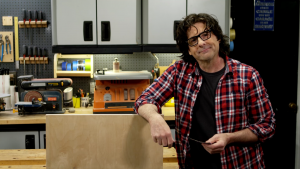Faulty Water Heater Dip Tube - Diagnosis and Replacement
How to Replace a Water Heater Dip Tube
If the water heater in your home was built between 1993 and 1996 and you are beginning to find small pieces of plastic in your faucet aerators, shower nozzles and washing machine supply tube, or if your water temperature is suddenly not as warm as it used to be, the source of the problem may be your water heater's dip tube.
Over 20 million gas and electric water heaters built between 1993 and 1996 -- about 90 percent of all hot water heaters built during this period -- contain a defective polypropylene "dip tube."
The dip tube in this example is the long white piece of plastic tubing lying at the bottom of the tank.
The purpose of a dip tube is to carry cold water to the bottom of the tank, where it is heated for use. Since cold water enters the tank at the top, the dip tube keeps this dense, cold water from mixing with the hottest water in the tank and cooling it as it heads to the rest of your house. If the dip tube breaks off, your hot water will be lukewarm at best.
The defective dip tubes tend to crumble and disintegrate into the tank. Over time, the water's acidity levels and the temperature settings on the water heater can have an effect on the rate at which these particular tubes fall apart, scattering white plastic particles into your water supply.
If you think your water heater may be affected, start by checking out the serial number on the tank. The first 4 numbers in the serial number usually indicate the month and year of manufacture.
This water heater's serial number starts with the digits 0802, which means that it was manufactured in August of 2002.
Affected water heaters will have the numbers 93, 94, 95, 96 or 97 in the third and fourth digit.
If a new water heater is not in your budget, you may be able to fix the problem by replacing the old dip tube and flushing the tank. To flush the tank, start by either cutting the electricity at the circuitbreaker or switching off the pilot light. on the tank.
Next, attach a garden hose to the spigot near the bottom of the tank. Place the other end of the hose over a drain.
Shut off the incoming cold water supply at the valve.
Turn on the hot water at one of the faucets and leave it running
In the house, turn on the hot water at one of the faucets and leave it running.
Open the spigot on the water heater and let the water drain from the tank via the hose.
Place a screen under the other end of the hose so you can see what is draining out. You may need to fill and flush the tank several times before it is completely clean of sediment and particles.
You may be able to remove the old dip tube by unscrewing the nipple for the cold water supply at the top of the tank. When loosened, pull it straight up and out of the tank. If the old dip tube is still attached to the nipple but is in need of replacement, use a crosslinked polyethylene (PEX) dip tube.
You can find out more information about defective dip tubes from the American Water Works Association.
Blog Articles
Expert Tips: How to Mount a TV on the Wall
Get step-by-step instructions on how to mount a TV on the wall, especially for big screen TVs. Master the art of wall mounting with our tips.
Frustrated by Stripped Screws? Here’s How to Get Them Out Fast
We've all been there. You're in the middle of a project, and suddenly your screwdriver spins uselessly in the screw head. The screw is stripped, and frustration sets in. With a little know-how and this simple trick, you can tackle a stripped screw and get your project back on track.
The Secret to Finishing Plywood Edges
Plywood projects are fantastic, but exposed edges can be an eyesore. This blog post unveils the magic of edge banding - a simple technique to create flawless, finished edges on your plywood projects, making them look professional and ready for paint or stain. Watch the video to learn how to apply edge banding like a pro!





